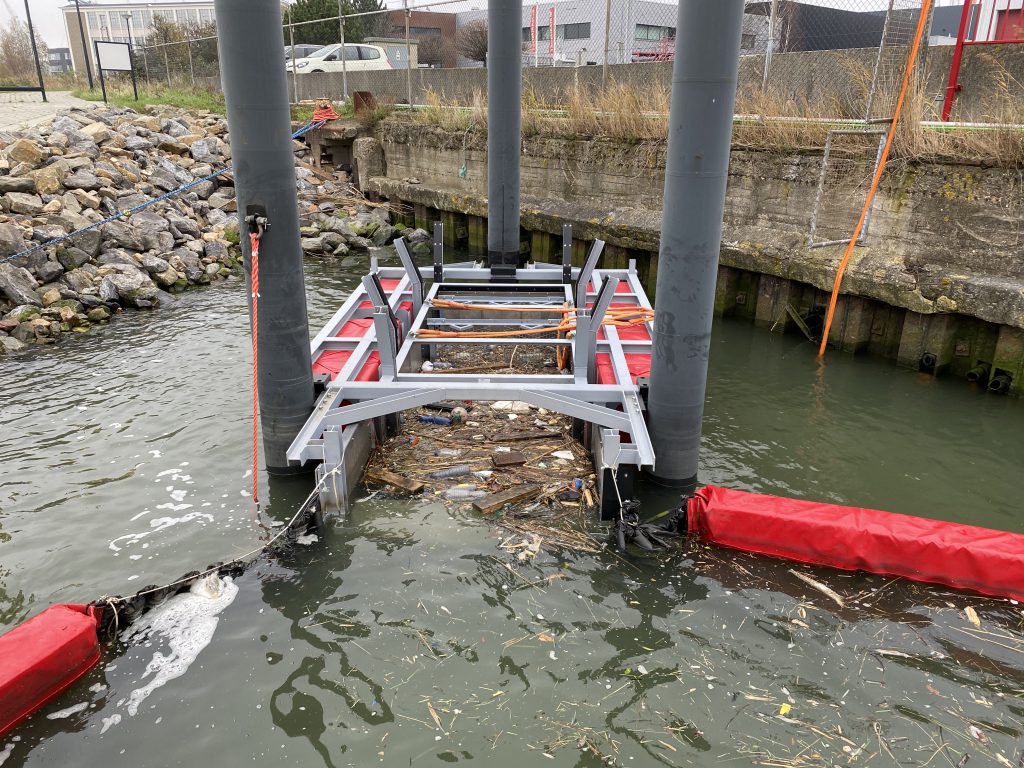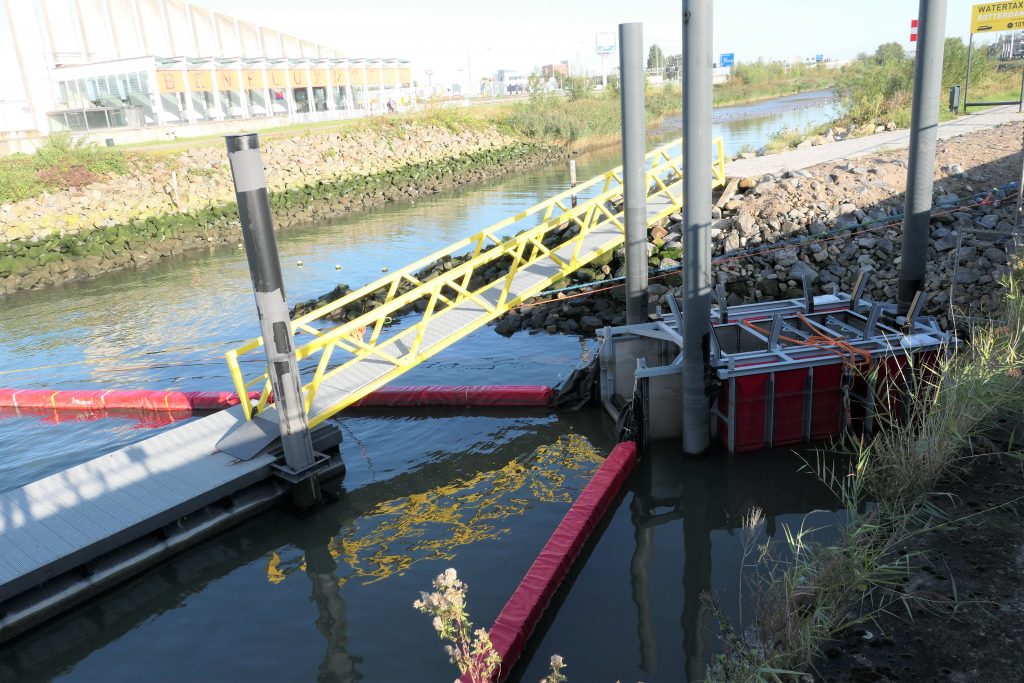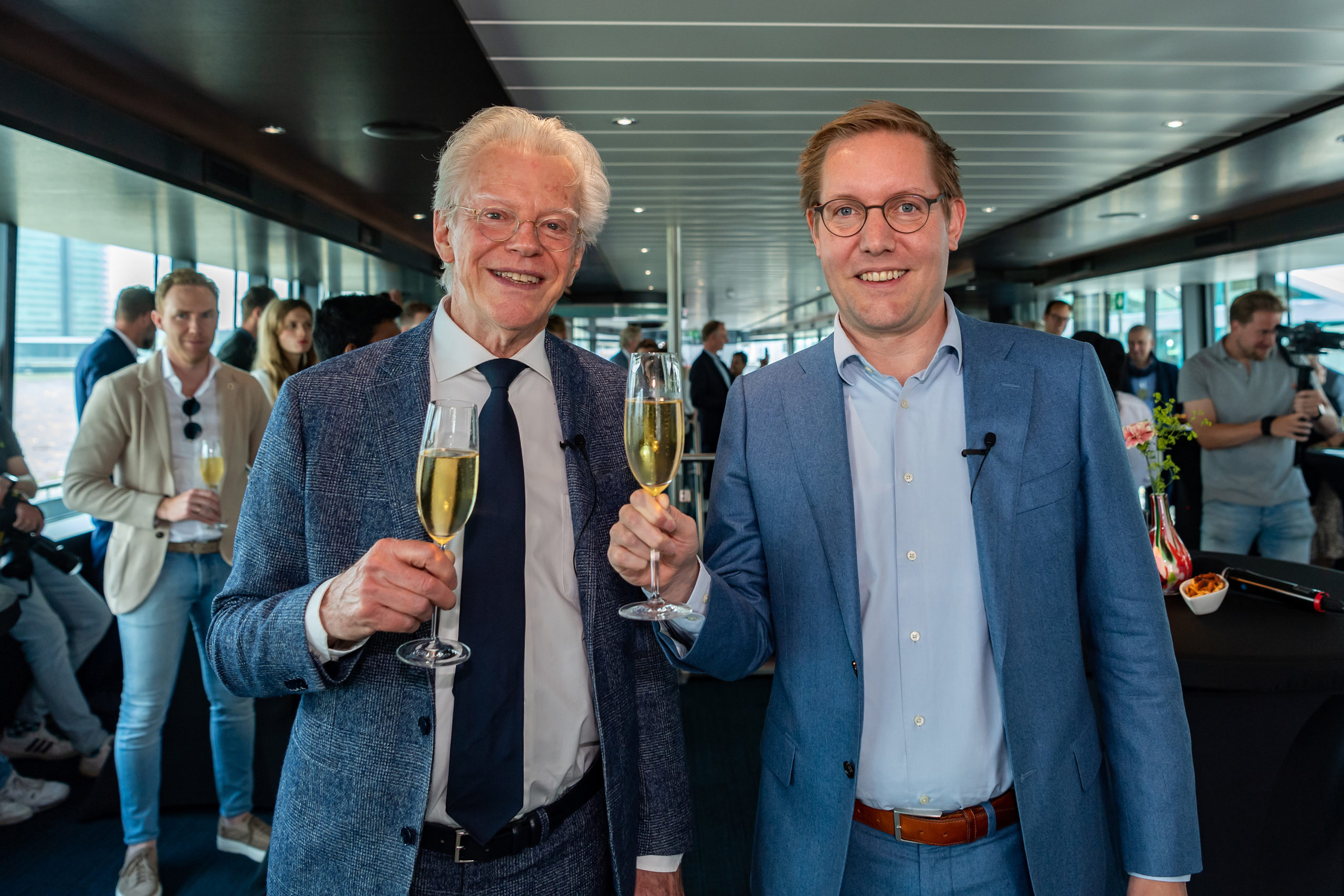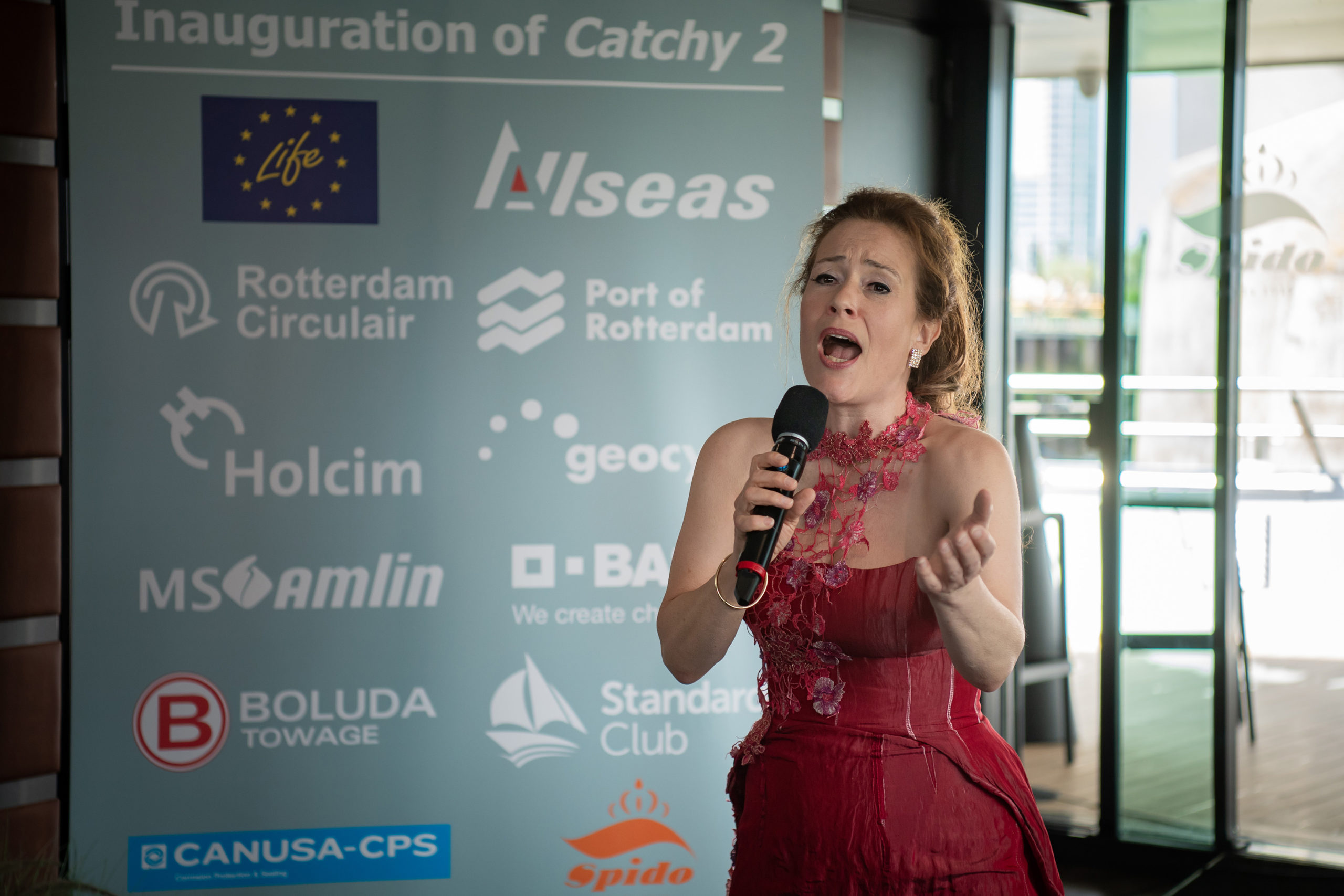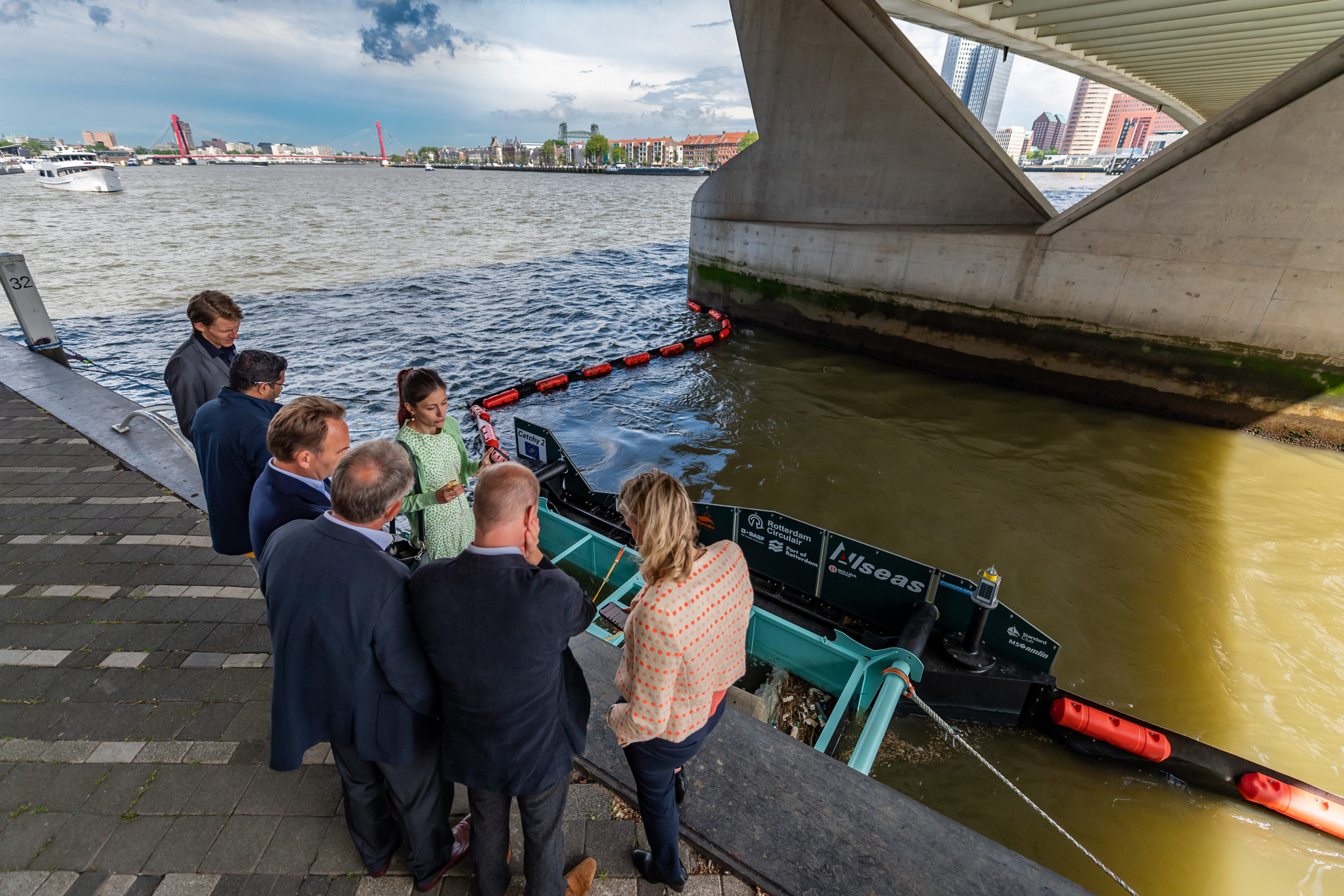Our solutions
Four plastic waste collection systems are already installed: one in the Port of Antwerp area, Belgium, in a dock with mostly wind driven litter, and one in the Nieuwe Maas river in Schiedam, the Netherlands, in a tidal harbour with both wind and current driven litter, Catchy 2, installed under the Erasmus Bridge in the main stream of the Nieuwe Maas River in the centre of Rotterdam. and Catchy Mini (Link to page) installed in the Waddenhaven Terschelling.
During the development, the aim for the systems was easy installation in all various types of waterways, such as canals, harbours, rivers and tidal areas. Catchy relies on wind and currents and captures both micro and macro plastics at the water surface and the upper part of the water column. The system comprises of a floating frame that supports a cage where the litter accumulates. Wind and current guide the litter towards the cage by one or several floating booms. The booms are equipped with an underwater skirt so that both floating litter and underwater litter are guided towards the collection cage. A clever non-return door prevents the litter from floating back into the river.
By choosing the right location for installation of our systems, we can optimise the collection of litter. The capacity of our system can be adapted to the amounts of litter present at the installation location. Our system can be emptied in a very short time with a mobile crane. Depending on the location, it can be moored with anchors, mooring lines or spud-piles.
Patje Plastic – Port of Antwerp
Port of Antwerp commissioned Allseas to develop a plastic collection system in the city’s “Doeldok” zone. The port authority says the introduction of a passive and autonomous catcher system significantly reduces the quantity of pollutant plastics (such as pellets) found in the waters around Doeldok, which is also home to a large plastic producing factory. Patje Plastic is Allseas’ first “proof of concept” for cleaner docks and inland waterways.
Read more about Allseas’ waste collection system Patje Plastic in the Port of Antwerp.
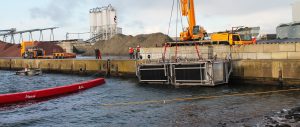
Catchy – Vijfsluizer harbour, Schiedam
Rijkswaterstaat, the Dutch authority for public works and water management, is looking into ways to collect the waste in rivers before it can spread to the sea. For the Nieuwe Maas River in the Netherlands, Rijkswaterstaat commissioned Allseas to develop a waste collection system for the Vijfsluizer harbour, located between the cities Schiedam and Vlaardingen. The predominant southwest wind drives waste into the Vijfsluizer harbour making it a “hotspot” for (plastic) waste and litter. Allseas developed Catchy to collect waste and prevent it from reaching the neighbouring North Sea.
Read more about Allseas’ waste collection system Catchy in the Vijfsluizer harbour in Schiedam.
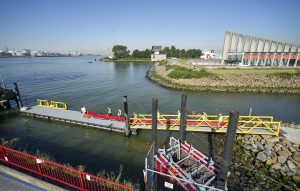
Catchy 2 – Nieuwe Maas river
The next generation, Catchy 2, is a system to operate in a flowing river. The technological challenges are coping with strong currents, tides and high amounts of biomass. In addition to technological development, we gave the system an attractive look inspired by a whale. Sustainable impact is key for the project, and construction is part of that, so materials used are selected for durability and/or sustainability; the collection cage will be partly made out of stainless steel to allow long-life stability and strength, and the whale-inspired plates that give the system its distinctive looks are made from recycled mix of polypropylene and polyethylene. Functionally, this system is able to collect litter in ebb- and flood conditions. Catchy 2 was officially inaugurated in May 2022. Watch a video of the inauguration of Catchy 2. Read more about Allseas’ river waste collection system Catchy 2 under the Erasmus bridge in Rotterdam.
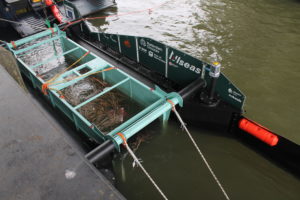
Catchy Mini – Waddenhaven Terschelling
Industrial innovation is usually rather large in terms of size. When looking into the problem of riverine plastics, the scale is very different than when operating offshore. Patje Plastic, Catchy and Catchy 2 all operate in large rivers close to industrial harbours. But rivers are not the only places litter can be found. To battle plastic litter in marinas, specifically Waddenhaven Terschelling, Allseas is developing Catchy Mini. Catchy Mini is inspired on the basics of Catchy and Catchy 2, but scaled down so it can be emptied by hand. Its smaller size makes the system more user friendly and a good fit in areas of limited water flow where space is limited. On 6 March 2023, we started the installation test phase and optimalisation of Catchy Mini. The system was officially inaugurated on 6 July 2024.

Allseas’ river plastics removal activities have received funding from the LIFE programme of the European Union. Grand agreement number LIFE17/ENV/NL000339.
Return to main page of Allseas’ River plastics removal.

